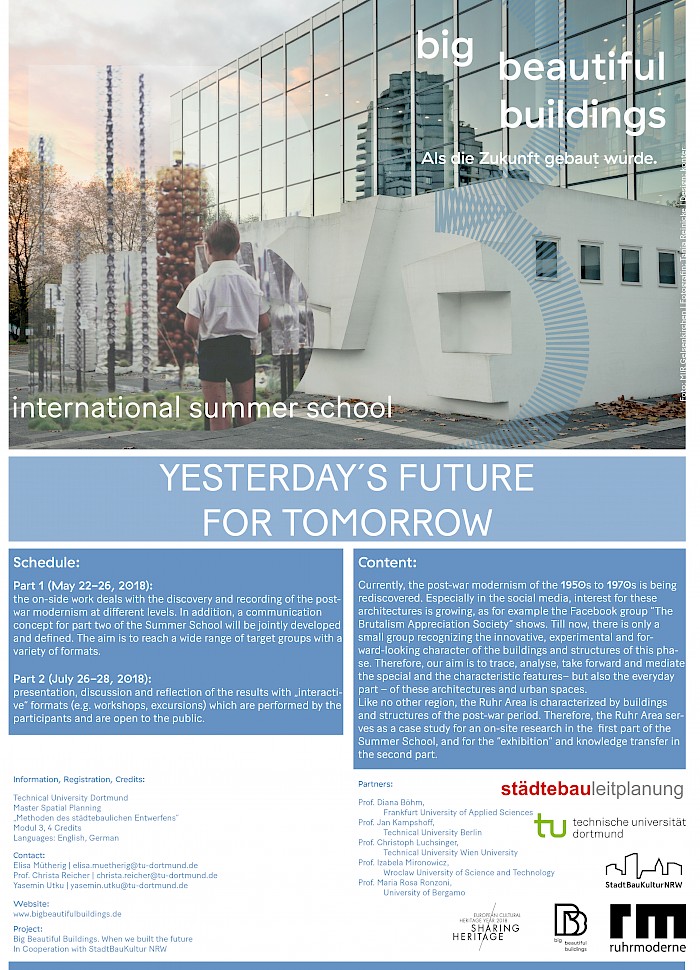International Summer School Yesterday´s Future for Tomorrow

Currently, the post-war modernism of the 1950s to 1970s is being rediscovered. Especially in the social media, interest for these architectures is growing, as for example the Facebook group “The Brutalism Appreciation” Society” shows. Till now, there is only a small group recognizing the innovative, experimental and forward-looking character of the buildings and structures of this phase. Therefore, our aim is to trace, analyse, take forward and mediate the special and the characteristic features– but also the everyday part – of these architectures and urban spaces.
Like no other region, the Ruhr Area is characterized by buildings and structures of the post-war period. Therefore, the following objects are chosen as case studies:
Education: Technische Universität Dortmund
New Centres: Forum Rathaus, Castrop-Rauxel
Parks: Gysenberg, Herne
Sports: Vonivia Ruhrstadion, Bochum
„Research-Cities“: Ruhr-Universität Bochum in Verbindung mit der Hustadt
Housing: Woldemey-Siedlung, Dortmund
Part 1 (May 22-26, 2018):
the on-side work at the TU Dortmund deals with the discovery and recording of the post-war modernism at different levels. In addition, a communication concept for part two of the Summer School will be jointly developed and defined. The aim is to reach a wide range of target groups with a variety of formats.
Part 2 (July 26-28, 2018):
presentation, discussion and reflection of the results with „interactive“ formats (e.g. workshops, excursions) which are performed by the participants. On July, 26 and 27 the Summer School at the VHS Bochum is open to the pubic (registration via VHS Bochum) and on the July, 28, there will be an excursion to Dorsten, where TU Berlin presents its results.
Partner universities:
Prof. Diana Böhm, Frankfurt University of Applied Sciences
Prof. Jan Kampshoff, Technical University Berlin
Prof. Christoph Luchsinger, Technical University Wien University
Prof. Izabela Mironowicz, Wroclaw University of Science and Technology
Prof. Maria Rosa Ronzoni, University of Bergamo
